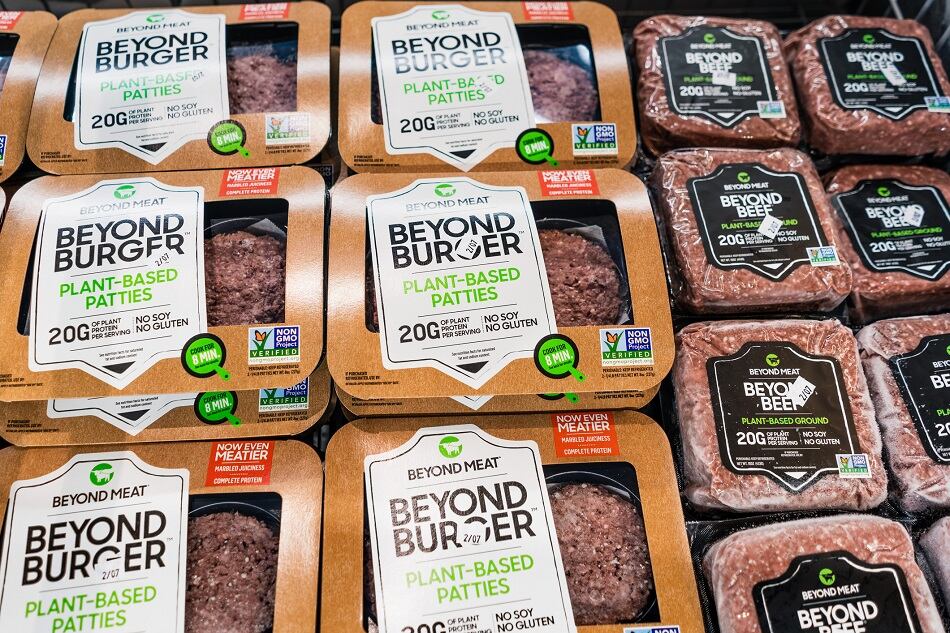A survey of 1,000 adults conducted by IFIC Dec. 3-5 revealed how drastically American’s diets and shopping patterns changed over the course of 2020 to include looking for products that support their physical and mental health, offer convenience and fit tightened budgets due to financial hardships endured during lockdowns.
It also shined a light on which of these changes consumers plan to abandon as soon as feasibly possible, and which are likely to remain with them long after the fear of COVID-19 subsides.
“When we asked people to tell us what excites them most about food in the new year, the top responses were related to COVID-19,” Ali Webster, director of research and nutrition communication at IFIC, told FoodNavigator-USA. For example, 29% said they were looking forward to eating with friends and family more often, 27% noted not worrying as much about COVID-19 when shopping for food or dining out and 23% cited going out to restaurants more often.
“What people want is simple: a return to normalcy,” Webster said. “This anticipation was highest in those 65 and older, an age group more at risk and often more isolated throughout the pandemic.”
At the same time, she added, people know that COVID-19 isn’t going away any time soon.
“When we asked what concerns them most when it comes to food in the year ahead, worries about coronavirus exposure risk when grocery shopping or dining out and being able to afford enough food for their household topped the list,” Webster said.
Clearly, she added, “while the risk for COVID-19 may decrease as more people are vaccinated and community spread slows, the issue of widespread food insecurity spurred on by the pandemic will be with us for a long time.”
Indeed, Feeding America estimates that the unemployment rate in American in 2020 will reach 10.5% – a 6.6% percentage point increase from 2018 – and 50.4 million people are projected to be food insecure this year, up 13.2 million from 2018 for an annual food insecurity rate of 15.6%.
Concerns about affording food was also reflected in IFIC’s data, which found 28% of people are worried about affording enough food for their households in the new year. This fear was edged out only by concern of contracting COVID-19 while shopping for food or dining out, which 39% of respondents flagged.
Given the extent and extremity of these concerns, Webster predicts that “while many are eager to return to their pre-pandemic behavior, many of the changes they adopted will remain in the new year – at least for a little while.”
Consumers balance comfort and health
One way that people have tried to alleviate their fear and anxiety about the pandemic over the last nine months, which likely will continue in the new year, is by reaching for comforting foods more often, according to IFIC’s survey results.
“Throughout the pandemic we’ve seen people return to foods that are familiar and comforting: We found that one in four people say they’re eating more comfort foods since the pandemic began. When everything around us seems so chaotic, it feels good to cook and eat foods that taste indulgent and remind us of happier times,” Webster said.
Noting that “there’s a long winter ahead,” she added, “this trend is bound to continue at least into the first part of 2021.”
As tempting as it may be to find comfort in decadent or nostalgic dishes, many Americans realize a healthy diet and lifestyle is one of their best defenses against the coronavirus. As such, IFIC found one in three Americans have improved their diets in the past year.
Specifically, 18% said they are seeking out foods that strengthen their immune system, 16% want food designed to provide health benefits and 11% are opting for dairy and meat alternatives more, according to IFIC.
While this is good news, it is not universal, Webster said.
“Younger people were more likely to say that their diets had become healthier compared to older age groups, while women were more than twice as likely as men to say their diets had become less healthy,” she explained.
The difference between men and women could be related to women often having to “shoulder so many of he stresses of the past year – childcare duties, virtual learning and increased household responsibilities on top of maintaining their careers,” said Webster. “So, for many, what time does that leave to focus on the healthfulness of their diet?”
Food and beverage manufacturers may find an opportunity here to appeal to busy women with more convenient, healthier options in the new year to help them make the healthy choice the easy choice.
Convenience rises as a longer-term priority
This demand for convenience was also reinforced by IFIC’s finding that 32% of respondents were more likely to cook meals that already were semi-prepared and that 36% cooked more simple, easy-to-prepare foods in 2020. In addition, 11% purchased cooking or meal kits – allowing them to check the box for convenience while still cooking from scratch, which 50% reported they were more likely to do in 2020.
Webster said she believes the trend toward cooking at home more is here to stay, but acknowledged that “at the same time, people are sick of cooking!”
She explained that most people are cooking more out of necessity – either because restaurants are closed or their budgets are tighter, but that “it takes a lot of time and effort to pull together multiple meals a day.”
As a result, she said, “this far into 2020 people are looking for ways to make meals faster, while still maintaining a level of healthfulness and variety.”




